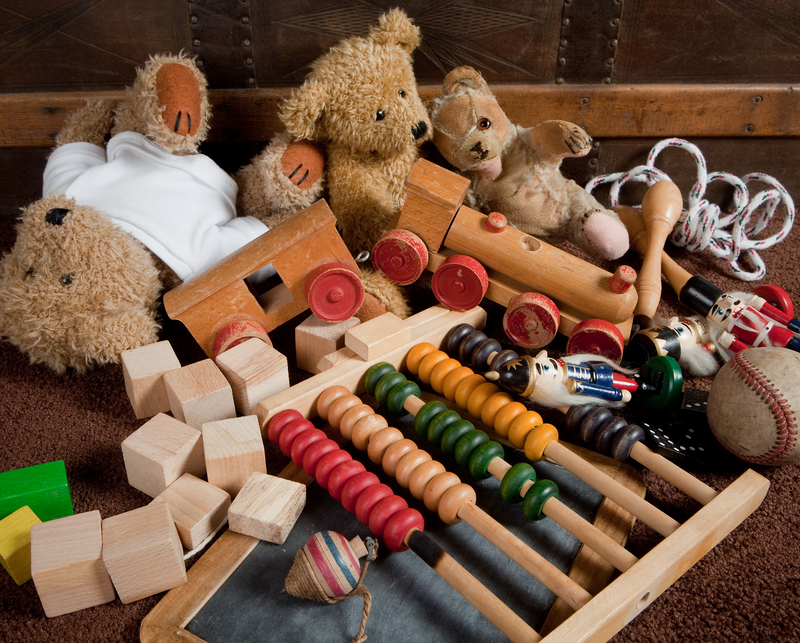Essential Considerations When Moving Your Bed and Mattress
Posted on 06/06/2025
Essential Considerations When Moving Your Bed and Mattress
Planning a move involves a myriad of details and logistical hurdles, but few items pose as unique a challenge as your bed and mattress. Whether you are relocating across town, moving to a new state, or simply rearranging your living space, ensuring the safety and cleanliness of your bed and mattress is crucial for comfort and hygiene. In this comprehensive guide, we'll break down essential considerations when moving your bed and mattress and provide you with expert tips to guarantee a smooth, efficient, and damage-free move.

Why Proper Bed and Mattress Moving Matters
Both your mattress and bed frame are significant investments, not just in monetary terms but also in your well-being. A mattress that's bent, torn, or dirtied during a move can result in discomfort, loss of support, and the spread of allergens and pests. Beds and mattresses are often bulky, heavy, and awkward to maneuver, increasing the risk of injury and property damage. This makes understanding key considerations when relocating these items paramount to the success of your move and the longevity of your sleep surface.
Pre-Move Preparation: Planning is Everything
1. Evaluate the Condition and Size of Your Bed and Mattress
- Assess Any Existing Damage: Before starting, examine your mattress and bed frame for signs of wear, tear, or structural issues. Documenting their current condition can help you claim insurance, if needed, and determine if it's time to upgrade.
- Measure Everything: Carefully measure the mattress, bed frame, and headboard as well as all doorways, stairwells, and elevators involved in your move. This helps prevent awkward or impossible turns that can damage both the item and your property.
2. Decide: Move, Replace, Sell, or Donate?
- Mattress Lifespan: Is your mattress more than 7-10 years old? If so, consider replacing it rather than paying to move it. An old mattress can harbor allergens, dust mites, and may no longer provide optimal support.
- Bed Frame Stability: If your bed frame creaks, wobbles, or has missing parts, it might not survive another move. Weigh the cost and hassle of moving versus replacing.
- Donations and Recycling: If you decide not to take your bed and mattress, research local charities and recycling programs for responsible disposal or donations.
Gather Essential Packing Supplies
Proper packing is a non-negotiable consideration when it comes to moving your bed and mattress safely and efficiently. Here's a handy checklist of materials:
- Mattress Bags: These heavy-duty, waterproof plastic covers protect your mattress from dirt, dust, and moisture during transit.
- Moving Blankets: Vital for protecting your bed frame from scratches, dings, and nicks, moving blankets can also be used as extra padding for the mattress.
- Stretch Wrap or Tape: Use these to seal mattress bags and secure padding to bed frame components.
- Tools: You'll need screwdrivers, Allen wrenches, and pliers for disassembling the bed frame and headboard.
- Ziploc Bags and Labels: Keep screws, bolts, and small hardware organized and easily retrievable during reassembly.
- Furniture Dollies and Straps: Especially with heavier king or queen mattresses, the right equipment makes transport safer for you and your team.
How to Disassemble Your Bed Frame and Headboard
Disassembling your bed is one of the most vital considerations when moving a bed. Properly taken apart, your bed is much less likely to experience stress, bending, and breakage during the move.
Step-by-Step Bed Frame Disassembly:
- Remove Bedding: Strip the bed of sheets, blankets, comforters, and pillows, then pack these separately. Wash all bedding before the move for a fresh start in your new home.
- Take Out the Mattress and Box Spring: Place them in protective mattress bags to shield against grime and moisture.
- Unscrew the Frame: Keep a small bag handy for all fasteners and label them clearly. Take photos during disassembly so you know where each piece belongs later.
- Disassemble the Headboard and Footboard: Carefully remove these components, especially if they are upholstered or ornate, which are more prone to damage. Wrap them securely in moving blankets.
- Bundle the Slats or Support Beams: If your bed has slats, keep them together with a strap or tape. Mark their ends for easier reassembly.
Expert Tip:
Keep instruction manuals or snap photos throughout the process for reference during reinstallation.
Protecting and Wrapping Your Mattress
Why Use Mattress Bags?
Moving mattresses without proper protection leaves them susceptible to dirt, water damage, and tears. A high-quality mattress bag acts as a waterproof and dustproof barrier, preserving the hygiene and structural integrity of your mattress during the move.
Proper Wrapping and Sealing Techniques
- Choose the Right-Sized Bag: Make sure the mattress bag fits comfortably without stretching, as overstressing can cause rips during the move.
- Seal All Openings: With stretch wrap or stable tape, secure all open ends of the bag to prevent dust or pests from getting inside.
- Double Bag for Long Moves: If your journey is long or weather conditions uncertain, consider double-bagging for extra assurance.
Tips for Specialty Mattresses
- Memory Foam: Avoid folding or bending a memory foam mattress, as this can cause creasing and permanent damage. Transport it flat whenever possible.
- Hybrid or Latex: Like memory foam, these require careful handling. Use sturdy support (a flat board or bed slats) during transport.
- Spring Mattresses: While slightly more forgiving, do not force bends, as this can deform the coils.
Transport Considerations: Loading and Moving Your Bed and Mattress
1. Plan Your Route
- Clear Obstacles: Ensure halls and doorways are unobstructed before moving your items. Remove fragile decor, rugs, and furniture that could hinder the process.
- Map Out the Path: Prioritize wide, straight paths that minimize awkward angles and tight squeezes.
2. Handling for Safety
- Teamwork: Beds and mattresses can be unwieldy. Always lift with at least one other person and use proper lifting techniques to avoid injury.
- Use Furniture Dollies: A dolly greatly reduces strain and keeps the mattress or bed frame level, broadening support and preventing drag damage.
- Secure in the Moving Vehicle: Lay the mattress flat if possible--never stand it on its end for a prolonged period, as this can alter its shape. Use straps to anchor the mattress and bed frame components so they do not shift during transit.
3. Weather Protection
If you're moving in inclement weather, keep mattresses and delicate bed materials shielded from rain or snow at all times. Extend the plastic covering beyond the edges of your mattress and tape securely.
Reassembling Your Bed in Your New Home
- Unpack Delicately: Remove all protective coverings outdoors or in an entryway to avoid bringing in dirt or allergens.
- Inspect for Damage: Check each piece for fresh nicks or structural issues before assembly.
- Refer to Manuals or Photos: Use your documentation to reassemble the bed frame and attach the headboard and footboard correctly.
- Level and Tighten: Ensure all joints are properly aligned and tightened to avoid future squeaks or wobbling.
- Let Your Mattress Breathe: Allow the mattress to air out before dressing it in fresh, clean bedding. This helps dissipate any temporary odors from the packing materials.
Pro Tips for a Trouble-Free Bed and Mattress Move
- Consider Professional Movers: Especially for large, heavy, or expensive beds and mattresses, professional movers have the equipment and expertise to transport your items safely.
- Insurance Matters: Check if your moving company offers insurance or consider getting extra coverage for expensive mattresses or designer beds.
- Timing: Move your mattress last if possible, so it's one of the first things unloaded and ready to set up for a good night's sleep.
- Don't Store Mattresses Upright for Long: If you must store a mattress before your move, lay it flat in a clean, dry space to prevent warping and sagging.
Common Mistakes to Avoid When Moving Your Bed and Mattress
- Skipping Protective Covers: Failing to use mattress bags can result in stains, tears, or the introduction of bed bugs or allergens.
- Improper Handling: Dragging or bending your mattress can irreparably damage its structure.
- Forgetting Hardware: Misplaced bolts or nuts can delay setup and lead to frustration, or even an unusable bed frame.
- Ignoring Reinforcement: Failing to secure pieces in the moving truck can lead to shifting and breakage on the road.
Sustainable and Hygiene Considerations
If you are conscious about sustainability and hygiene when moving your mattress and bed:
- Eco-Friendly Mattress Bags: Seek biodegradable or recyclable protective covers.
- Disposal: When replacing, recycle old mattresses through certified programs to keep them out of landfills.
- Sanitization: After the move, wipe down bed frame components and consider steam cleaning your mattress if it has been exposed to dust or contaminants.

FAQs: What Else Should You Know When Relocating a Bed and Mattress?
- Can I fold or roll my mattress for a move?
Only certain foam mattresses can be carefully rolled, but innerspring or hybrid mattresses should never be folded. - How do I prevent bed bugs when moving?
Use sealed mattress bags and avoid placing your mattress on the ground. Inspect everything before reassembly. - What if my mattress won't fit up the stairs in my new place?
Plan in advance by measuring both the mattress and all access points. If in doubt, ask moving pros about alternative access options.
Conclusion: The Smartest Way to Move Your Bed and Mattress
Moving your bed and mattress doesn't have to be a source of stress. By being proactive, choosing the right packing materials, and taking time to protect your investment, you can ensure a safe, hygienic, and straightforward relocation. If in doubt, don't hesitate to consult with professional movers--your back (and your bed) will thank you! Remember, essential considerations when moving your bed and mattress are not just about logistics--they're about securing a restful sleep in your new home from the very first night.
With proper planning and these actionable tips, you'll transition your bedroom essentials effortlessly and settle into your new home with comfort and confidence.
